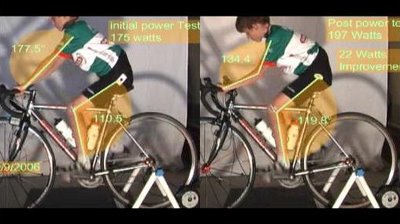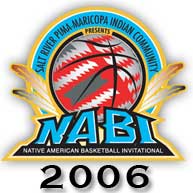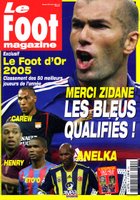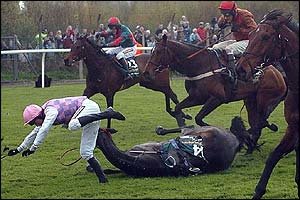ANALYZE THIS: DARTFISH
Think you need a physical therapy degree to get involved with Dartfish Video Software Solutions? “No,” says Dr. Gregory Combs, a sports management professor at Methodist College who also owns a video training analysis company called Velo Smart Coaching. “It’s just like knowing how to use Excel and PowerPoint. I think it’s something else that students can really benefit from having on their resume.”
Combs, who retired from the military in 1996 after serving as an aviator during the original Gulf War in Somalia, now lives in North Carolina and is a member of the Cross Creek Cycling Club based in Fayetteville. Most of his clients are cyclists, triathletes and duathletes.
I spoke with Dr. Combs to find out more about Dartfish and video training analysis, what athletes can benefit from using it and why he stresses to his students to learn the innovative technology.
Q: What exactly do you do when you video train an athlete?
A: What I do, it’s not that complicated for me to check a rider’s position on the bicycle in accordance with his flexibility and range of motion. Video analysis really helps [riders] visualize what it looks like to be on the bike, and that way they can actually feel it and listen to their body. It just helps me analyze what they’re doing, how they’re compensating, what they’re doing right with the pedal stroke and how they’re positioned on the bicycle for better efficiency.
Q: What kinds of things do you test?
A: You can compare someone’s initial application to the sport to the drills that they’ve applied and show them the comparison – how they’ve improved. Or you compare them to other players by superimposing them. In the most recent Winter Olympics when you saw the downhill skiers, they would show one skier, superimpose him on another player and compare them on their turns, on their speeds. You can analyze the angles, the foot placement and how they contort their bodies. You can use it for the prevention of accidents. You can save an athlete’s career. You can use it for risk management to possibly reduce someone’s insurance costs.
Q: How do you find your clients?
A: A lot of the guys that I coach on the [Cross Creek Cycling] team are my clients. But I work with anybody: recreational riders to elite guys. I live in Southern Pines and it’s also a huge golf and equestrian community because it’s right outside of Pinehurst. I can go to the driving range when there’s a golf pro giving a lesson and say, “Listen, if you’re trying to explain to this guy what a swing looks like, I’ll video it for you and show you right there live and analyze it. I can give you tracking angles, I can actually track the golf head on how you’re pulling back on the backstroke and how it’s coming forward, hand placement, arm, angles, back.” And then the golf pro can say to his student, “Here, this is what you’re doing.” And I can put another client photo or video right next to it and say, “This is how it should look.” And then you video the guy how he used to golf, his swing and placement and then show the improvement – you can actually superimpose them. You can really show him where he’s lacking or what he’s doing well. So I can say, “Hey golf pro, I’m just going to enhance your services. Pay me $25 to come out per person, and I’ll even burn the videos to CDs.” Some of these golfers are spending big bucks just to reduce their handicaps.
Q: What are some of the general costs you charge?
A: The positioning and power test analysis is $370. Monthly training programs are $100 per month.
Q: How long has the technology been around for?
A: It’s been around for quite some time, but they’re just now enhancing the applications to where you can track angles while someone’s moving. You can put different labels on the joints and actually say this is where most of the energy is going to. It’s been around for quite some time, but they’re now bringing it into the U.S. market. Have you ever heard of Velocity Sports? They do a lot of speed camps and agility, and Dartfish does a lot with them. It’s a great business all in its own depending on your location. I mean, you can go to tennis camps, golf camps, equestrian, soccer, you name it, and help the coaches who would be the experts in the sport and just provide them a service. That’s what I’ve been trying to get my sport management students to get involved with this year. I’m actually trying to institute the Dartfish software into the curriculum. That way, they have an additional skill set. The New York Mets are using it. The folks at SUNY Cortland, their sports management program is actually the one who spearheaded Dartfish. A lot of their interns and graduates go on and work for pro teams. So it’s a huge skills set to have. I think it’s something else that students can really benefit from having on their resume. They can actually help facility managers earn additional income by helping grassroots programs and colleges with video analysis services.
Q: Do you need a physical therapy degree to get involved with video analysis?
A: No. Even if I had no coaching background, if I understood the application of going out there and video taping and collaborating with coaches, it would be an equivalent of a sports management major who’s really interested in a certain component of facility management, such as game day operations. And you can have an additional skills set to able to say, “Hey, I know how to run Dartfish.” It’s just like knowing how to use Excel and PowerPoint. Just having that skills set and saying, “Hey, I can actually go out and set up your cameras and videos, and burn CDs.” The coaches can say, “I want everything filed this way, that way,” and you can actually track the angles the coaches are looking for and help them analyze it.
Q: What bicycle brands do you recommend?
A: I’m a big fan of Cannondale. It’s American made, it’s fairly inexpensive. It’s an entry-level bicycle. You can get up into the thousands of dollars with that. But it’s just a really good machine. That bike I highly recommend to anyone. Litespeed is another really good bicycle that I recommend.
Q: How often do you have your cycling clients train during the week?
A: The clients that I’m working with, I have them riding anywhere from four to six days a week. If it’s earlier in their riding season, I’m increasing the duration but I’m decreasing the intensity. That’s when they’re getting in a lot of base miles and a low intensity. It enhances their pedal stroke ability, builds their endurance, increases their mitochondria development in the muscle system, which is a great thing to have, so when you’re trying to put out the power you have the mitochondria that’s doing that. It also enhances recovery, so the base foundation is really important. When the season starts building, then they get into doing more tempo-level rides.
Q: How do you decide a rider’s level of training?
A: There are a few things I look at. Their age and ability – how long they have been involved in the sport. With power ranges, I can actually say that these are the types of races you’re training for. I can really synthesize and get to the nuts and bolts of what they need to be working for. If they cannot reproduce that power and stay at that power range, I tell him, “Training’s over.” And that really takes the guess work out for me to tell them when they should back off on training.
Q: For someone who is picking up cycling for the first time, what would be your most important instruction?
A: Before I coach any athlete, I want to make sure they’re on the bike right. There’s what you would call a Ferrari syndrome. People feel, “Hey, if I buy a bike that looks nice, has top technology, I’m going to go fast.” Technically they’re going faster than they were in their older bikes, but they’re still in bad position. I’ll see athletes on bicycles with numb hands, shoulders, lower back, crouch. It’s all based on old technology, old wise tales so-to-speak on how you should be on a bicycle, not taking into consideration flexibility and range of motion. But you know and I know that there are Mustangs out there that don’t have a GT engine, but they may have a 4 cylinder and they may take 10 seconds to go from 0 to 60. And so, I see a lot of people out there on bicycles – six, seven, eight thousand dollar bicycles – that are in a position that I would call the paper-boy route. Their seats are way too low and their knees are flopping way out. It’s basically the equivalent of choking up on a baseball bat trying to hit a home run. They’re not getting full range of motion. So I would rather see my clients on a moderately expensive or inexpensive bicycle and get on it right, so they can use their muscles appropriately. And then, I work on their physiological system. I use the video analysis to enhance my explanation and visualization for their purposes. I also use power meters – I test them physiologically by heart rate, I get their speed, I get their RPMs, their power output. Then I’ll do a pre-test, post-test with that as well. And I’ll show them that this is their initial application to the bicycle and how they were performing. And then after I make the adjustments based on their strengths and weaknesses and their range of motion, and I show them their improved methods. They’re in a more efficient position on the bicycle and more aerodynamic.
Q: What is the biggest challenge you face when you work with your clients?
A: The main thing with most people is it’s not telling them to go fast; it’s telling them when to quit or recover. A lot of people will over-extend and they won’t allow themselves to recover. That’s usually the biggest problem. There was a quote, “There’s a marriage between a bicycle and a human being. Unfortunately the bicycle is only somewhat adjustable and the human body is only somewhat adaptable. So there has to be a positive synergy between the two.” Very few coaches really understand that, especially in cycling. So when I started getting into coaching more seriously, I started looking at the positioning application as the core of coaching. If you can’t get the person on the bike right, if you can’t get them to understand the technique of how to use their body appropriately, you can’t really build from there.
To learn more about Dartfish, go to www.dartfish.com. 










